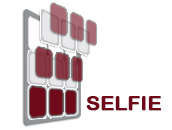
Funded under: PAR-FAS
Sistema di Elementi avanzati multi Layer basato su superFici e materiali Innovativi nanostrutturati per una Edilizia sostenibili ed energicamente efficiente
Start date 15 March 2016 End date 30 April 2018
Keywords: nano-structured surfaces, indoor sanitization, reduction of energy consumption, BMS
SELFIE Project has developed new energy-efficient construction systems that are on the one hand easily adaptable to different construction typologies, with particular reference to the renovation and requalification of existing buildings and on the other hand to allow savings in terms of energy consumption and reduction of greenhouse gas emissions.
- The project is based on the use of innovative technological solutions and materials with the aim of studying and developing a "facade component" composed of opaque and transparent modules in which it is possible to integrate an innovative "system" of multilayer panels consisting of materials and nano-structured surfaces. The new vertical casing component guarantees the following performances:
- Reduction of energy consumption and CO2 emissions: the new component will be developed as a technological system capable of reducing energy losses in the winter months and limiting the phenomena of thermal overheating in the summer months thanks to the adoption of innovative technological solutions in the part opaque (use of the multiplayer panel consisting of glass coupled with reflective IR treatment and / or with innovative foamglass insulating material loaded with products that maintain the temperature through phase change) and transparent (low-emissive thermal break frames and made with absorbent, opening glass) for natural ventilation and equipped with mobile screens in which it will be possible to integrate photovoltaic cells).
- Wellness and health (indoor sanitization): the reduction of indoor pollution both of bacterial and anthropogenic origin (solvent emission from paints, furniture, processes etc) will be guaranteed through the use of paints and nanostructured internal surfaces. This can also be achieved by means of forced or natural ventilation with photocatalytic filters, which in addition to guaranteeing the correct heat exchange can reduce the most common polluting agents.
- Energy production, through the use of new generation photovoltaic panels that guarantee better architectural integration.
- Reduction of outdoor environmental pollution through the adoption of external surface treatments capable of breaking down nitrogen oxides
- Reduction of internal pollution through air filtration system and its treatment integrated in the panel used as buffering of the opaque part.
- Use of sensors and wireless systems, both for the use of users, and for the purpose of detecting temperature and pollutants with control of the building's systems. The system integrated in the facade component can be extended and connected to the BMS system of the entire building, allowing to rationalize its functionality and consequently reduce energy consumption.
The goal of the project is to test an innovative and modular facade component made as follows:
-
a surface treatment on a glass-ceramic plate (or other internal coating material) with self-cleaning characteristics and antibacterial and anti-smog properties
-
a semi-element, made of honeycomb, which allows the circulation of forced air (layer b, with internal air recirculation in winter) or natural (layer e, with summer external air flow)
-
a sealing layer (based on glass or in polymer resin) suitable for hermetically coupling the first honeycomb element b with the layer of foam glass
-
an innovative foam glass layer enriched with phase change polymers (PCM) at the expected operating temperatures, in order to ensure natural control of the internal temperature through the reversible melting and crystallization processes
-
a second semi-element in honeycomb
-
a glass plate, with external self-cleaning treatment, coupled with PVB to allow greater resistance: the PVB will be enriched with nanomaterials in order to maintain the transmittance of the visible light of the glass and absorption in the infrared
-


